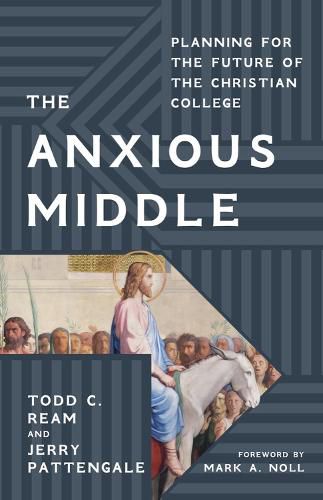Readings Newsletter
Become a Readings Member to make your shopping experience even easier.
Sign in or sign up for free!
You’re not far away from qualifying for FREE standard shipping within Australia
You’ve qualified for FREE standard shipping within Australia
The cart is loading…






In the 1990s, Christian colleges and universities experienced a record boom in students and employees. However, less than twenty years later Christian institutions experienced new challenges spurred on by four major changes: first, the "Great Recession" of 2008 and widespread debt; second, declining birthrates in certain regions of the United States; third, the passing of the Affordable Care Act, which raised the question of whether Christian institutes were required to cover contraceptives; and fourth, the Supreme Court's decision to legalize gay marriage, which brought issues of employment to the forefront at certain Evangelical institutions. Yet despite mounting challenges, most Christian colleges and universities are still stronger now than at any point in their respective histories by almost any measure.With The Anxious Middle, Todd C. Ream and Jerry Pattengale engage the work of Dietrich Bonhoeffer as a model for navigating our tumultuous times. The authors argue that if the present age is defined by what Bonhoeffer calls in Creation and Fall the "anxious middle"-somewhere between Eden and the Apocalypse-the challenges faced by Christian higher education must be recognized as both existential and practical. To confront them while still embracing any opportunities afforded by occasional cross breezes, Christian colleges and universities would be wise to employ a fourfold approach to planning informed by Bonhoeffer's work as well as historic and contemporary examples: institutions should be articulate about their missions, imaginative in advancing them, collaborative in deploying them, and strategic in sharing them.
Trustees, administrators, faculty members, and others concerned with the future of Christian colleges and universities will find in The Anxious Middle a planning process applicable to organizational levels ranging from the campus-wide to the departmental or the programmatic. The result is an understanding of Christian higher education not merely focused on surviving but thriving between Eden and the Apocalypse.
$9.00 standard shipping within Australia
FREE standard shipping within Australia for orders over $100.00
Express & International shipping calculated at checkout
In the 1990s, Christian colleges and universities experienced a record boom in students and employees. However, less than twenty years later Christian institutions experienced new challenges spurred on by four major changes: first, the "Great Recession" of 2008 and widespread debt; second, declining birthrates in certain regions of the United States; third, the passing of the Affordable Care Act, which raised the question of whether Christian institutes were required to cover contraceptives; and fourth, the Supreme Court's decision to legalize gay marriage, which brought issues of employment to the forefront at certain Evangelical institutions. Yet despite mounting challenges, most Christian colleges and universities are still stronger now than at any point in their respective histories by almost any measure.With The Anxious Middle, Todd C. Ream and Jerry Pattengale engage the work of Dietrich Bonhoeffer as a model for navigating our tumultuous times. The authors argue that if the present age is defined by what Bonhoeffer calls in Creation and Fall the "anxious middle"-somewhere between Eden and the Apocalypse-the challenges faced by Christian higher education must be recognized as both existential and practical. To confront them while still embracing any opportunities afforded by occasional cross breezes, Christian colleges and universities would be wise to employ a fourfold approach to planning informed by Bonhoeffer's work as well as historic and contemporary examples: institutions should be articulate about their missions, imaginative in advancing them, collaborative in deploying them, and strategic in sharing them.
Trustees, administrators, faculty members, and others concerned with the future of Christian colleges and universities will find in The Anxious Middle a planning process applicable to organizational levels ranging from the campus-wide to the departmental or the programmatic. The result is an understanding of Christian higher education not merely focused on surviving but thriving between Eden and the Apocalypse.